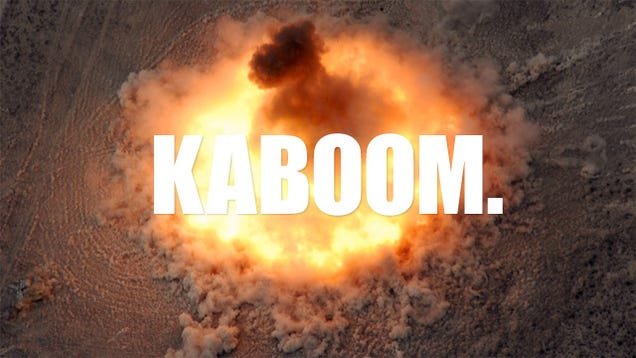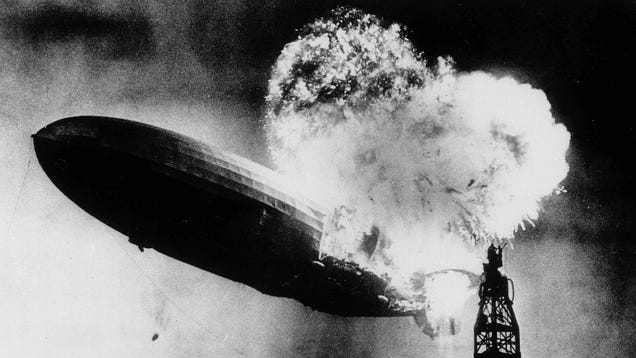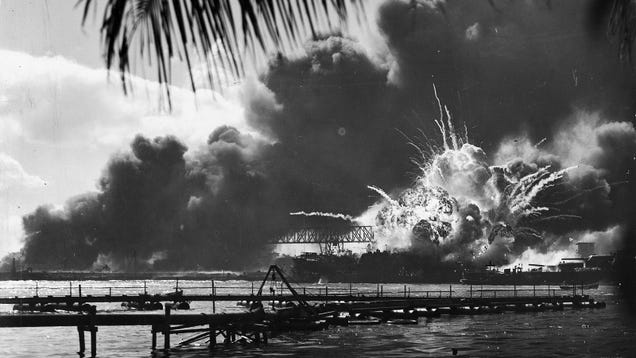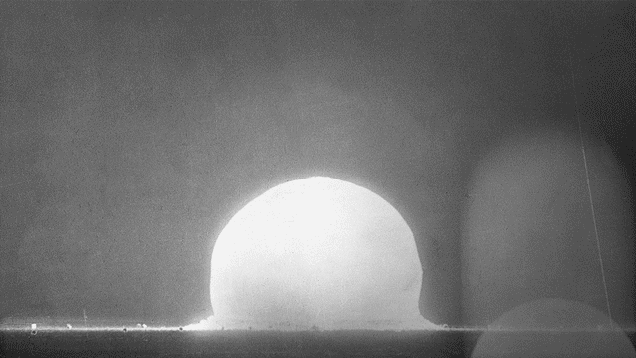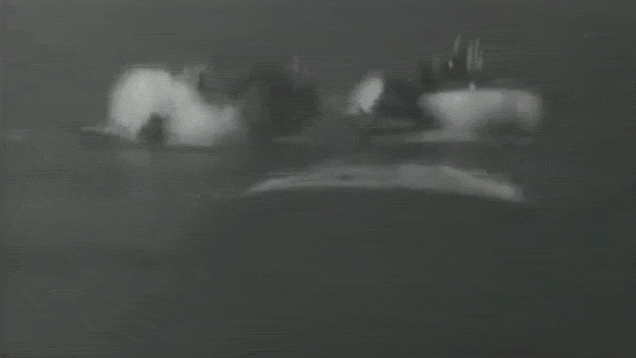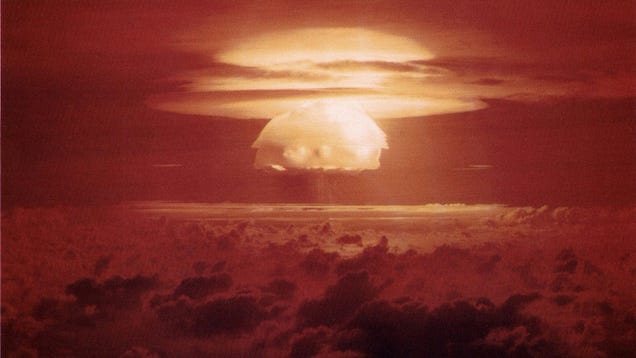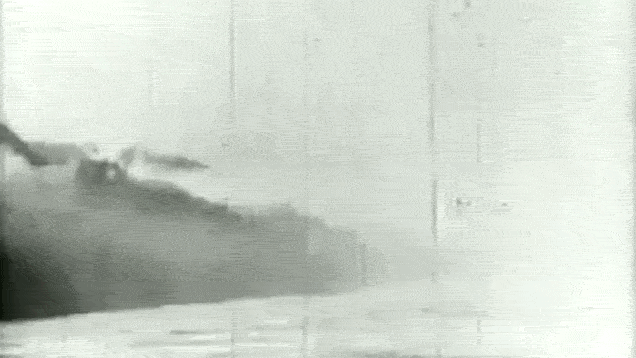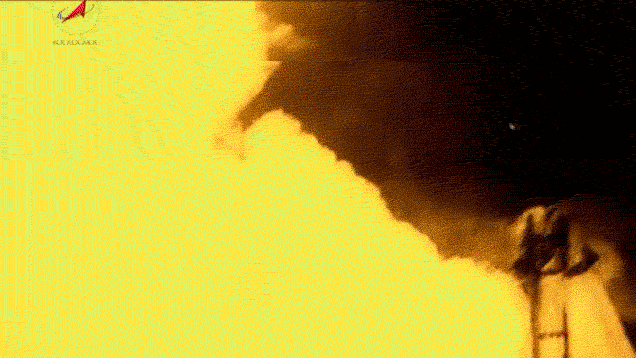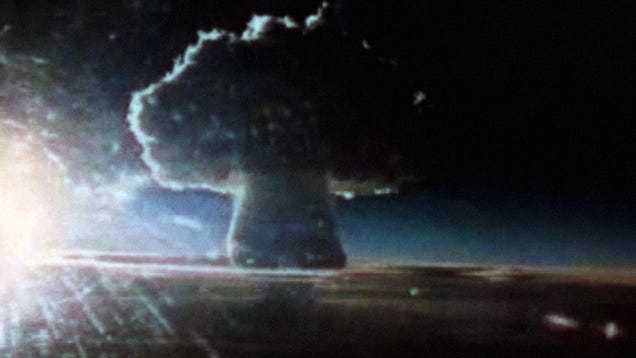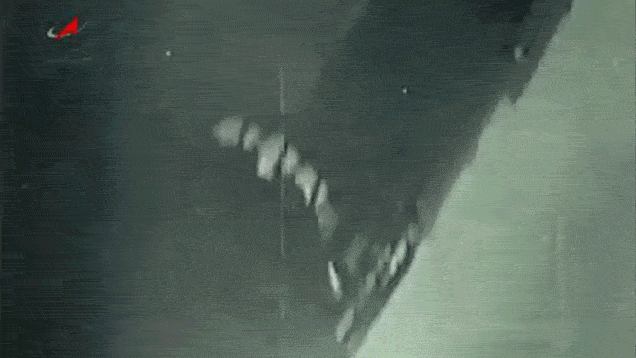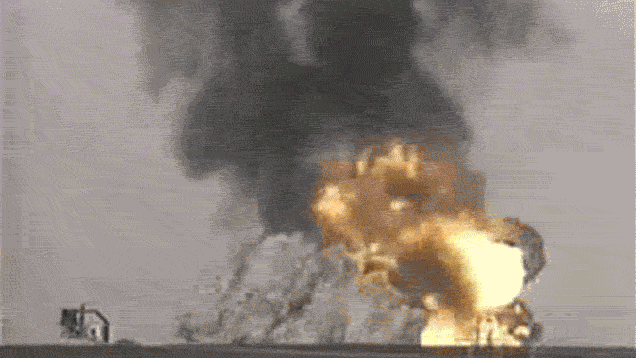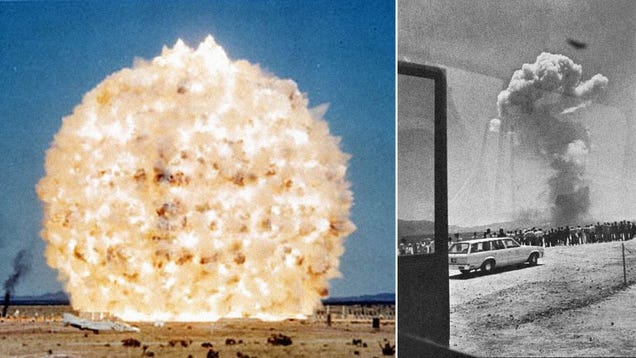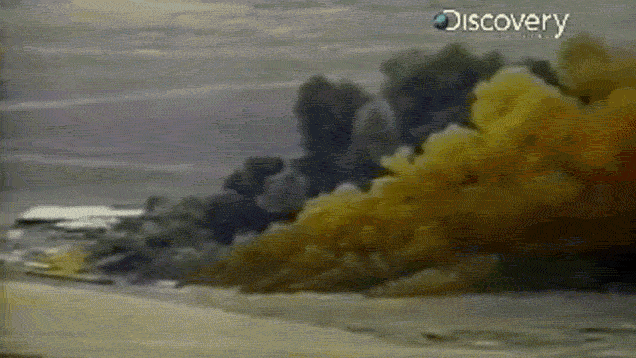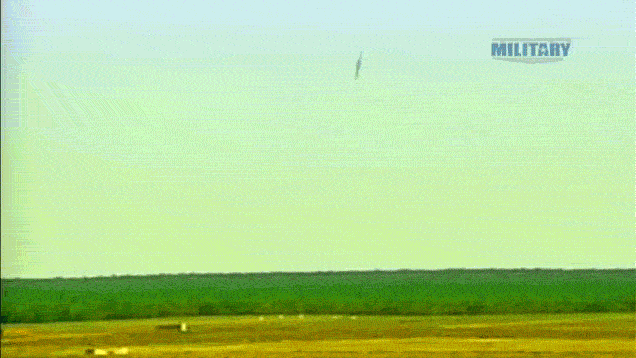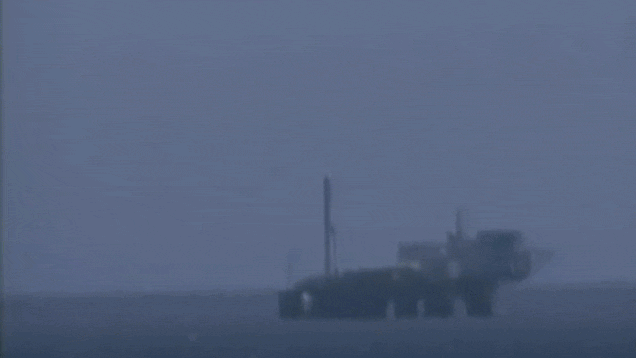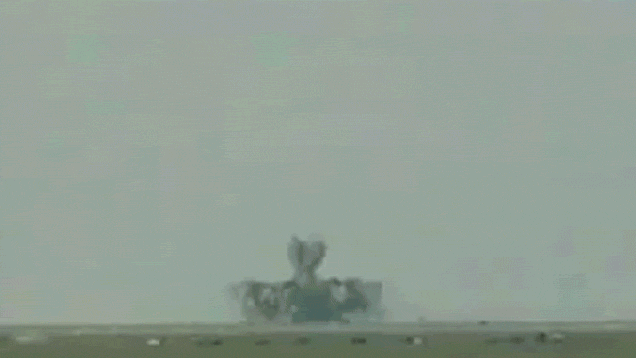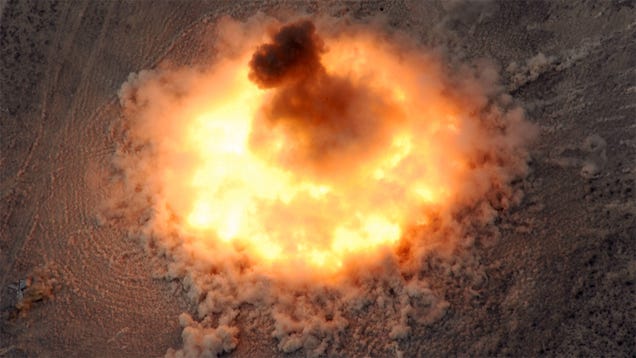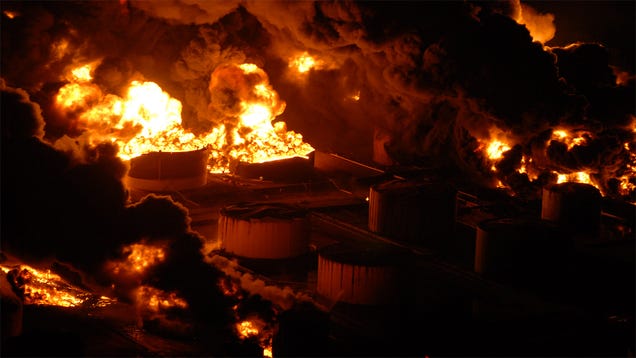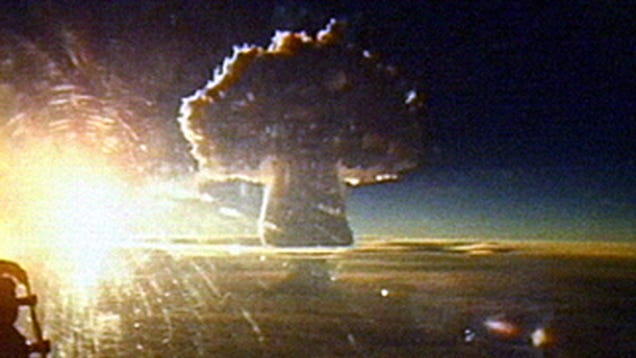 Big Ivan, better known as Tsar Bomba, was 57 Megatons of Soviet might. That's 1,400 times Hiroshima and Nagasaki combined and ten times the entire combined fire power expended in WWII. In one bomb. One explosion. And, incredibly, that's only half of what it could have done.
Big Ivan, better known as Tsar Bomba, was 57 Megatons of Soviet might. That's 1,400 times Hiroshima and Nagasaki combined and ten times the entire combined fire power expended in WWII. In one bomb. One explosion. And, incredibly, that's only half of what it could have done.
In July 1961, Nikita Khrushchev, First Secretary of the Communist Party of the Soviet Union (and leader of the USSR) decided that he had had enough of the unspoken nuclear testing moratorium that his country, the US, and the UK had been abiding by since 1958. The 22nd Congress of the Communist Party would convene that October, providing the perfect venue to show off the USSR's military muscle. With the world's eyes on Moscow, what better way to show the West who was boss than with a "testing spectacular" setting off the largest man-made explosion of all time?
Problem was, they didn't have a bomb nearly big enough for Khrushchev. Up to that point, the largest hydrogen bomb the Soviets had detonated was the puny 3 MT RDS-37 (albeit the first true hydrogen bomb they built) but Khrushchev demanded something much, much bigger—enough to make America's 15 MT Castle Bravo test in 1954 wilt. And he wanted it built in time for the Congress. And since telling Nikita Khrushchev "no" simply didn't happen, a four man development team—Victor Adamskii, Yuri Babaev, Yuri Smirnov, and Yuri Trutnev—designed and simultaneously built the 24-foot long, three-stage thermonuclear device in just 15 weeks.
Officially designated as AN602 hydrogen bomb, the Tsar Bomba used the common three-stage Teller-Ulam design wherein the primary fission reaction is used to compress a secondary mixed fission/fusion fuel layer, which in turn compresses a large, tertiary thermonuclear payload—essentially stringing a pair of hydrogen fission reactions together in order to generate enough energy to instigate fusion in a uranium payload.
Since the project was so rushed, only one such weapon was ever built and even then just barely. At 27 tons, it weighed nearly as much as the Tu-95 that carried it and was so big that crews had to cut off the plane's bomb-bay doors in order to fit it in. Even so, at 11:32 am on October 30, 1961, the Tsar Bomba exited Andrei Durnovtsev's plane at a height of 6.5 miles and slowly parachuted towards Mityushikha Bay test range in Novaya Zemlya (giving the drop plane just 188 seconds to escape). At 2.5 miles high, Big Ivan went boom.
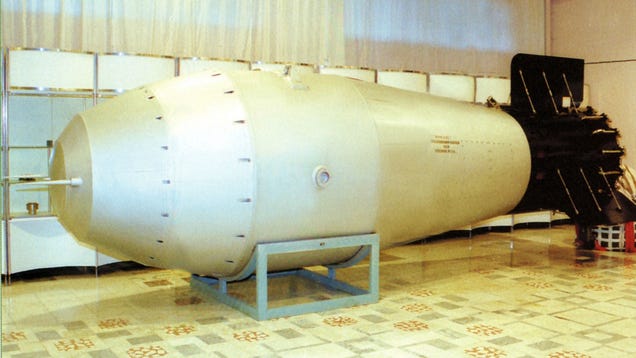
The resulting fireball had a radius of nearly 10,000 vertical feet and its 210,000 foot tall mushroom cloud reached into the stratosphere. The light generated by the reaction could be seen from over a 1,000 km and the force of its explosion registered a 5.0 on the Richter scale. The shock wave generated air pressures topping 300 PSI, circled the Earth thrice, and cracked windows 900 km away in Norway and Finland. Buildings in the abandoned town of Severny 55 km away were leveled—all of them—and upon later inspection, ground zero was reportedly the texture of a skating rink.
As one observer recalled,
The clouds beneath the aircraft and in the distance were lit up by the powerful flash. The sea of light spread under the hatch and even clouds began to glow and became transparent. At that moment, our aircraft emerged from between two cloud layers and down below in the gap a huge bright orange ball was emerging. The ball was powerful and arrogant like Jupiter. Slowly and silently it crept upwards.... Having broken through the thick layer of clouds it kept growing. It seemed to suck the whole earth into it. The spectacle was fantastic, unreal, supernatural.
This utter destruction is only half of what the Tsar Bomba was capable of. It was designed and built to deliver a staggering 100 megaton payload. The Tsar was supposed to utilize fast-fissioning uranium tampers on the second and third stages of the bomb, which would have allowed for a bigger reaction and subsequent energy release. However, just before the test was to take place, Soviet leadership ordered the tampers swapped out with lead replacements in order to prevent nuclear fallout from reaching populated areas of the USSR.
These lead tampers cut the bomb's yield by 50 percent but they also eliminated 97 percent of the resulting fallout. As such the Tsar Bomba, the largest, most destructively powerful device ever built by man also holds the notable distinction of being the relatively "cleanest" nuclear weapon ever tested. Luckily, that record was only important for two years until the signing of the Partial Test Ban Treaty which brought an end to above-ground nuclear weapons tests.
Comparing with another big bomb :

Sumber : gizmodo.com
